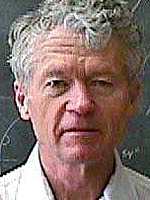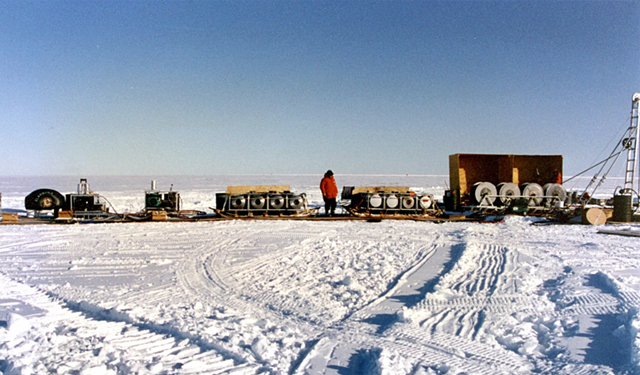|
W. Barclay KambCaltech glaciologist instrumental in Antarctic ice stream stream studiesPosted May 6, 2011
W. Barclay Kamb, a long time professor at the California Institute of Technology Born in San José, Calif., Kamb began his long and distinguished Caltech career in 1948 as an undergraduate at the age of 16. He graduated with a degree in physics in 1952 and obtained his PhD in geology in 1956. Hired upon graduation as assistant professor of geology, Kamb rose through the ranks to become a full professor in 1962 and Rawn Professor in 1990. He served as chair of the Division of Geological and Planetary Sciences for 11 years, from 1972 to 1983, and as vice president and provost of the Institute from 1987 to 1989. 
W. Barclay Kamb
Kamb was a man of many interests and deep intellect whose expertise in the physical sciences was broad. Although he began his graduate studies as a physics student, a strong love of the outdoors and the influence of Bob Sharp — a renowned geologist credited with building the Division of Geological and Planetary Sciences at Caltech — drew him into geology. Kamb contributed to many areas of science, but he is best known as one of the world’s leading glaciologists, having enhanced our understanding of the crystal structure of ice and the dynamics of glacier movement. He developed and maintained an intellectually and physically challenging field program on glaciers around the world, establishing new techniques and making unique and technically difficult measurements under extreme conditions. One of his most important contributions to the study of glacier motion was drilling through glaciers to their bases, and sampling and imaging the contact between the glacier and the underlying rock. This work provided critical insights into glacier flow — especially the extraordinarily rapid movement that characterizes some glaciers called ice streams. In recognition of his extensive research on Antarctic ice streams, the Kamb Ice Stream (formerly Ice Stream C) was named in his honor in 2003. Kamb was both a Guggenheim Fellow and an Alfred P. Sloan Research Fellow during his tenure at Caltech. He directed Caltech’s research program at the Blue Glacier on Mount Olympus in Olympic National Park, Wash., which helped geologists gain a better understanding of flow processes in ice, and he was a fellow of the Geological Society of America Kamb is survived by his wife, Linda Pauling Kamb; his brother, Peter Ray, and his sister, Barbara Marinacci; his sons Barclay J., Alexander (Sasha), Anthony, and Linus; and nine grandchildren. Adapted from a press release from the California Institute of Technology. |



For USAP Participants |
For The Public |
For Researchers and EducatorsContact UsU.S. National Science FoundationOffice of Polar Programs Geosciences Directorate 2415 Eisenhower Avenue, Suite W7100 Alexandria, VA 22314 Sign up for the NSF Office of Polar Programs newsletter and events. Feedback Form |


